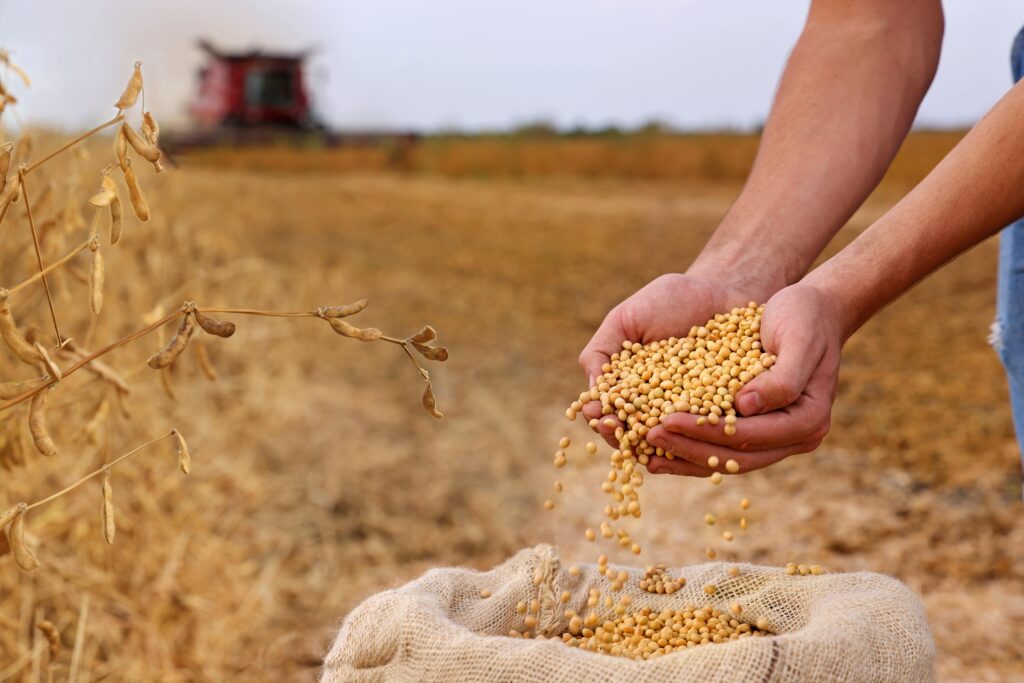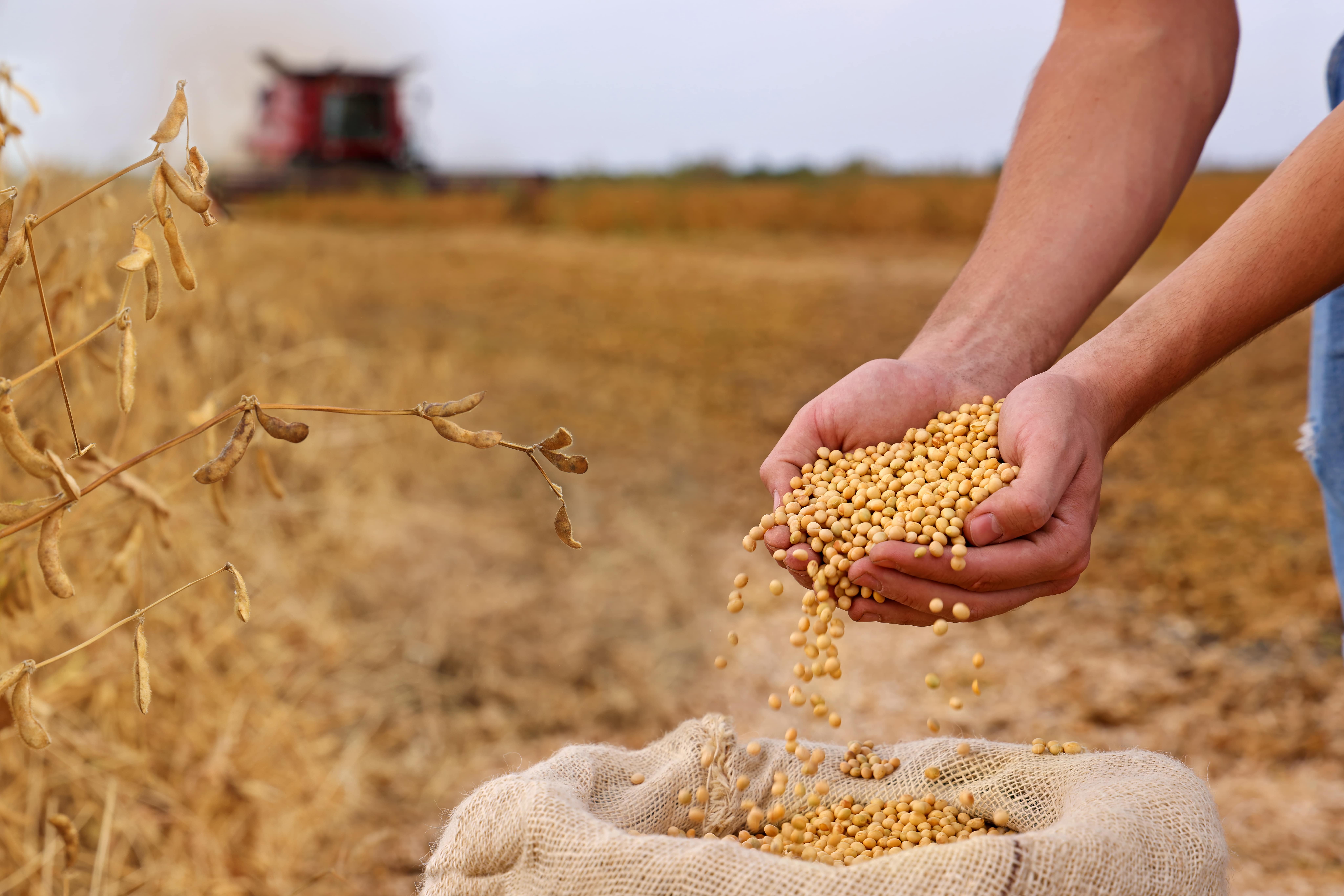
As the demand for organic food continues to rise, driven by increasing consumer concerns about the health and environmental impacts of conventional crops, farmers and feed mills face obstacles to capitalize on this growing trend. Since soybean meal has become the world’s primary protein source in animal feed formulations, organic soybean meal plays a critical role in organic livestock and poultry production to support this surging demand.
To compete in the organic market, producers and processors need to understand the growth prospects and hurdles that lie ahead in this space. Here’s a brief overview of what’s driving the popularity of organic soybean meal and where this market is headed.
Organic origins
As crop production has evolved, agricultural researchers have developed new growing systems, inputs, and genetically modified (GMO) seeds to increase yields of mass-produced crops like soybeans. These advances have enhanced production to provide an abundant, affordable source of protein for human food and animal feed alike.
However, some health advocates argue that the chemical inputs used in conventional crop production can harm humans and the environment, driving an increased awareness of—and demand for—organic alternatives produced without synthetic fertilizers or pesticides.
Organic crop production has been practiced in the United States since the late 1940s, prompting the need to verify that foods labeled as organic actually meet certain standards. In an effort to define and standardize the production and certification of organic crops and livestock, Congress developed the Organic Foods Production Act of 1990, establishing the National Organic Program (NOP) within the U.S. Department of Agriculture (USDA). This agency enforces national organic standards and accredits third-party organizations to certify producers that meet these requirements.
To be certified organic, products must abide by the National List of Allowed and Prohibited Substances, avoiding synthetic inputs from the seed to the soil all the way to the retail shelf. Organic livestock and poultry must subsist on 100% organic feed sources. As the dominant source of protein and essential amino acids in poultry and livestock feed, organic soybean meal is a vital ingredient in organic animal diets. Not only must organic soybean meal come from organically grown, non-GMO soybeans, but it must also be extracted through mechanical, rather than chemical, methods.
Organic vs. conventional processing
Around the world, most large-scale soybean processors rely on solvent extraction to separate the oil from the meal to supply food and feed markets. This process uses hot solvents like hexane to chemically dissolve fat from the seeds. Although this process is highly efficient, leaving less than 1% residual oil behind, the byproducts must undergo additional processing to remove residual solvent from the oil and the meal. Because of the hazardous chemicals involved in this method, solvent extraction cannot be used to produce organic ingredients.
While small-scale mechanical oil mills may not be able to compete with solvent extractors in terms of overall production volumes or oil recovery rates, they offer an unmatched advantage when processing organic soybean meal. Mechanical presses leverage brute force to physically crush the beans, squeezing oil from the meal without using chemicals. Organically grown soybeans’ chemical-free oil and meal command premium prices while meeting the rising demand for organic products.
Anderson’s proprietary ECOMEAL process provides sustainably produced, chemical-free, expeller-pressed meal with high nutritional value and increased digestibility for feed formulations. This process combines a Dox™ Extruder with an Expeller press to significantly improve product quality and processing efficiency. Using high temperature, high pressure, and mechanical friction, the Dox quickly cooks, dries, and shears oilseeds to break down the material, preparing it for more efficient pressing. This system effectively deactivates harmful anti-nutritional factors while preserving protein quality.
When paired with the Expeller, the Dox Extruder can reduce residual oil levels to 5% while doubling the capacity of the press and the life of the pressing parts. This dynamic duo can optimize efficiencies in the processing plant while producing high-quality meal to supply the organic feed market.
Organic soybean meal headwinds
U.S. processors crushed a record-high 215.8 million bushels of soybeans in October of this year—11.5 million bushels more than the record set in December 2023—which translates to nearly 7 million bushels of soybeans crushed per day.
However, due to these ample supplies, U.S. soybean prices have continued to face downward pressure, according to the latest USDA National Agricultural Statistics Service Agricultural Prices report. Last month, conventional soybean meal prices in Illinois came in at $316 per short ton, down $27 per short ton from the previous month. Meanwhile, feed-grade organic soybean meal is selling for $886 per ton on average. According to Fastmarkets price reporting data, U.S. organic soybean meal prices have dropped nearly 30% in the last six months after growing 110% in the preceding 18 months.
Although organic soybean meal commands a premium price compared to conventional meal, the production costs tend to be higher while yields tend to be lower. As U.S. farmers struggle with high interest rates, declining crop prices, and rising production costs that outpace revenues—not to mention the uncertainty of pending Farm Bill relief as federal lawmakers dawdle—many farms opt to grow conventional soy because it’s cheaper and easier to produce. Since most soybean meal crushed in America does not meet organic standards because it comes from genetically modified seeds, U.S. farmers rely heavily on organic soybean meal imports.
While the U.S. supply of organic soybean meal nearly doubled between 2014/15 and 2020/21 in response to an 80% increase in demand for organic livestock feed, domestic production simply can’t keep pace. Imports provided the majority (83%) of organic feed to the U.S. by 2020/21, reaching $594 million compared to the U.S.-produced organic feed value of just $397 million, according to estimates from price reporting agency Mercari. That year, Indian soybean meal alone accounted for 46% of U.S. organic supply.
The U.S. demand for organic soy reached 696,000 tons during 2021/22, but U.S. farmers only harvested 273,000 tons during that period. Although imports were key to closing the gap, America’s dependence on organic soybean meal from foreign sources was suddenly curtailed by trade restrictions and tariffs when the U.S. ended its organic recognition agreement with India in early 2021 due to concerns over the organic integrity of products. Since then, Africa has emerged as the leading exporter of organic soybeans to the U.S., with imports reaching 68,000 tons in 2022/23—more than double the previous year—while imports of African organic soybean meal more than tripled over the same timeframe. U.S. processors have become increasingly dependent on organic soy from West Africa, with 42% of organic soybean meal imports and 11% of whole organic soybean imports sourced from West African countries through September of this year—up from just 3.6% two years ago.
As organic soybean production in Africa continues to increase, the U.S. is confronting concerns about the credibility of these supplies. Last month, the NOP warned about possible fraudulent imports of organic soybeans and soybean meal from West Africa, calling certifiers to enforce increased inspections to crack down on nonorganic feedstock marketed as organic. Earlier this year, the USDA’s Strengthening Organic Enforcement rule took effect, cracking down on fraud by requiring electronic certificates and increased oversight for organic imports.
Facing these unraveling trade relations amidst increasing demand, U.S. soybean processors and feed producers are feeling the pressure to pick up the slack in their own production of organic soybean meal.
Organic growth potential
Since solvent extraction plants can’t compete in the organic soybean meal market, mechanical oil mills are perfectly positioned to capitalize on this niche market as it continues to grow. With the organic soybean meal market projected to continue growing, the increasing demand presents a huge opportunity.
To capitalize on this trend, though, processors require high-quality mechanical extraction equipment that can meet strict requirements to supply the organic market while operating efficiently enough to protect profit margins in the volatile oilseed industry. Backed by over a century of extraction expertise, Anderson’s proprietary ECOMEAL system can help processors unlock these lucrative opportunities in the organic soybean meal market.
Contact Anderson International to optimize your organic oilseed operation today.
